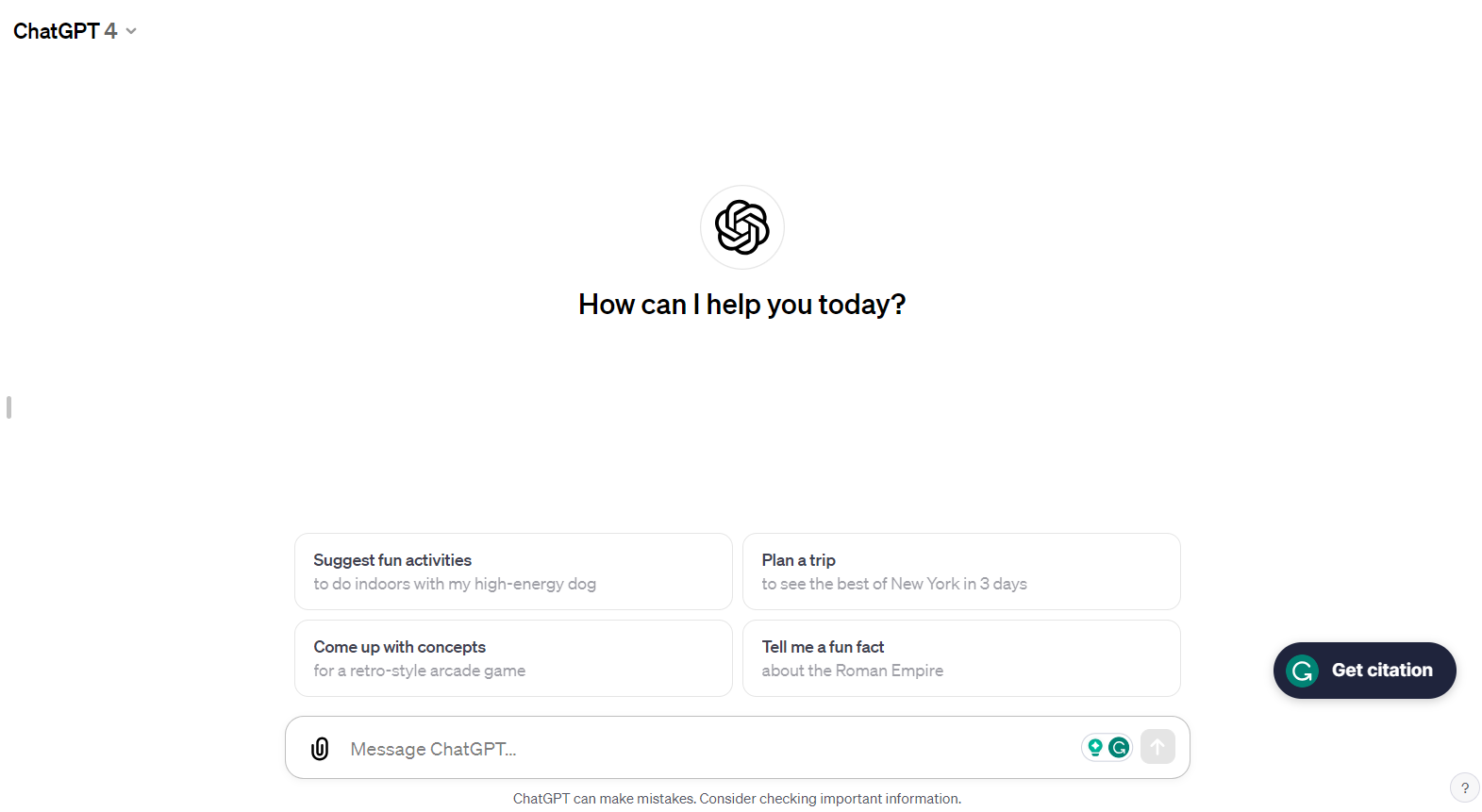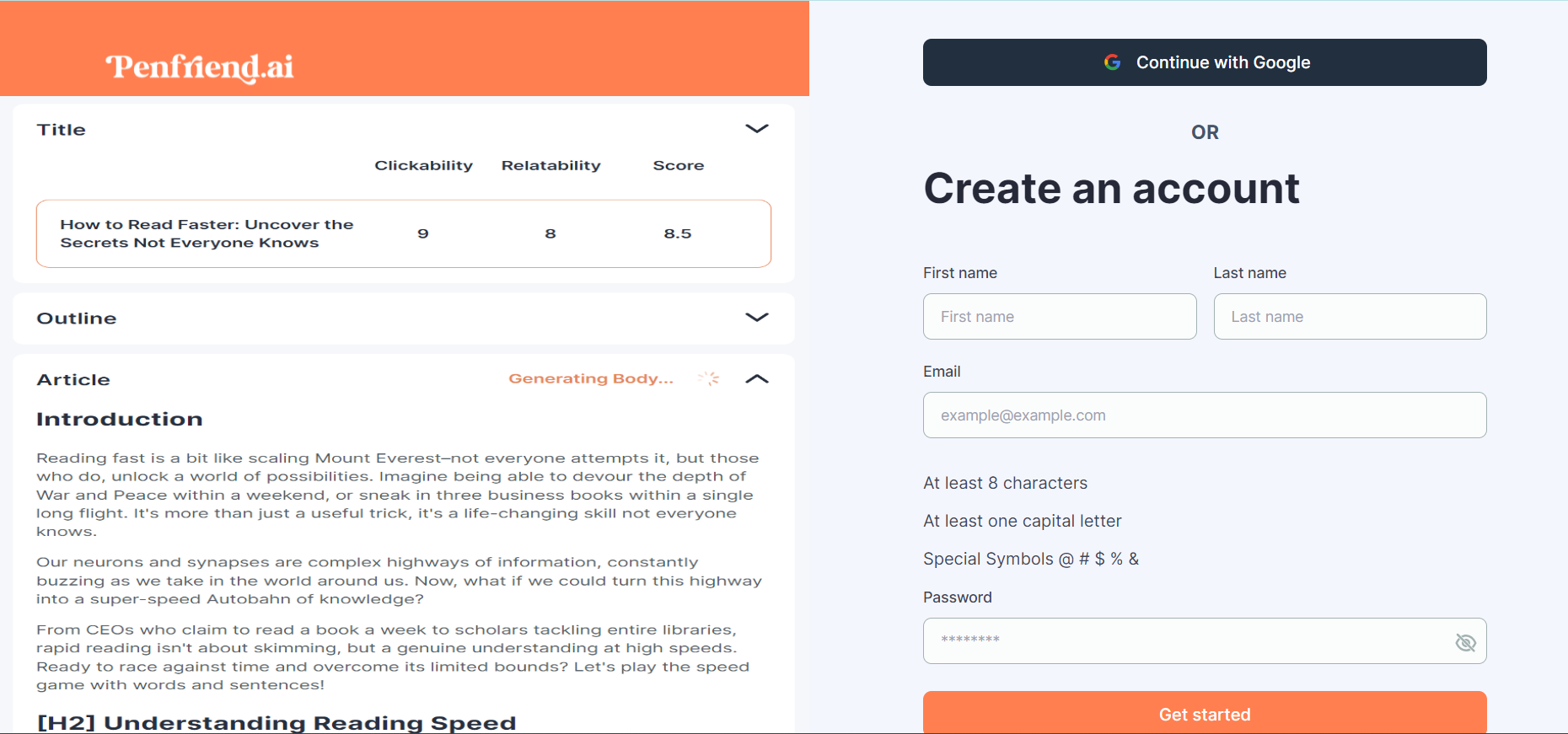Published on: January 17, 2024
AI writing tools: How to train your staff for maximum efficiency
Author: Amy Lancelotte

Picture a gym full of people lifting weights using only their right arm. Bizarre, isn’t it? Yet, in the realm of digital content creation, we are often guilty of such a one-sided approach, heavily leaning on human expertise while the power of AI writing tools remains untapped.
Used correctly, AI productivity tools like AI copywriting platforms have the potential to revolutionize the way your team operates, streamlining workflows, eliminating repetitive tasks, and boosting overall efficiency. They can augment human creativity, not replace it, much like a left hand assisting the right for a balanced lift. We’ll guide you through effectively equipping your team with these potent tools, leading to impressive gains in productivity. Steer clear of AI’s artificiality, unmask HR’s inefficiencies, and train yourself to wield these tools for maximum yield. Now, let’s pump some digital iron.
Unleashing the power: Benefits of AI writing tools
- Benefits range from enhanced productivity and efficiency to improved accuracy and consistency.
- AI writing tools allow for personalized content creation.
- They bring adjustments that can unlock crucial benefits for your business.
Enhancing productivity and efficiency
AI writing tools aren’t just advanced tech accessories; they’re game-changers in boosting productivity. They automate repetitive tasks, ensuring that your team can focus on what truly matters – creative work. Meanwhile, the predictive text and auto-complete features save time, speeding up writing tasks and increasing worker productivity.
AI isn’t confined to large businesses. Even small startups can harness its power to streamline operations and increase productivity. However, it’s important to understand the nuts and bolts of how these tools work to integrate them effectively into your work process.

Improving accuracy and consistency
Human errors, some as simple as typos, can deal a significant blow to your business image (and SEO score). That’s where the potential of AI writing tools comes into play. They take care of grammar, punctuation, and spell checks to ensure meticulous accuracy in your content.
Not only that, keyword consistency is a critical aspect of SEO. AI-powered tools keep the usage of keywords consistent across your content, thus helping your content rank higher in search results.
Facilitating personalized content creation
In today’s day and age, one-size-fits-all no longer cuts it. AI productivity tools like those that assist in writing blogs, social media posts, and product descriptions offer personalized content, enhancing audience engagement. This means they’ll tailor content to your user’s interests, behavior, and preferences, making your outreach more impactful and effective.
AI Writing tools offer an array of benefits that can streamline your business operations, improve content accuracy and consistency, and offer personalized content creation. However, proper understanding and training are required to effectively reap these benefits. With the right knowledge, AI can become a powerful ally in your writing endeavors.
Laying the foundation: Implementing AI writing tools
- Picking an AI writing tool that matches your business needs.
- Weaving AI tools into your current workflow effortlessly.
- Getting your team ready for a smooth switch to AI-powered tools.
Choosing the right AI writing tool for your business
When picking AI writing tools, and any AI tools for that matter, the deciding factor should be the alignment with your business needs. It’s a two-part endeavor. First, you need to have a comprehensive understanding of what your company’s needs are. Are you looking for AI tools to speed up content creation, fine-tune SEO strategy, or automate social media posts? Once you have a clear overview of your requirements, the second part is researching different AI writing tools and their functionalities.
While some AI writing tools are good for overhauling the content creation process, others excel at data-driven, analytic-heavy writing. Understanding these differences and assessing them against your business objectives can drive adoption success. Remember, a cost-effective choice doesn’t always mean going for a cheaper tool; instead, it’s about a return on investment.
Integrating AI writing tools into existing workflows
Switching over to AI does not imply scrapping your existing workflows. The ideal AI tool should seamlessly integrate with your current systems without creating a disruption. Easy integration means fewer changes to your existing workflows and less resistance from your staff.
Similarly, consider if the tool is compatible with other tools your team uses daily. Take into account the tool’s adaptability to different systems like CMS, email marketing software, or project management systems. Remember, the goal is to enhance productivity, not hamper it.

Preparing staff for the transition to AI tools
Your staff is your critical resource during the transition into using AI writing tools. The change might generate anticipation or apprehension among team members. Alleviate such emotions through clear communication about the change, its benefits, the training process, and the expected outcomes.
Conduct training sessions that acquaint them with the new system and artificial intelligence in general. These sessions should be dynamic, allowing for hands-on practice and addressing common queries. Provide continuous support through FAQs, troubleshooting guides, or a dedicated helpline.
Just as one size does not every customer, remember that not all your employees will learn at the same pace. Adopt a flexible training method, suiting varied learning paces and styles.
All in all, the transition to AI writing tools is not just a technological shift, but also a cultural and mind shift. It requires strategic planning and efficient training but can boost productivity and efficiency. The key is to make the transition as seamless and user-friendly as possible.
Mastering the art: Training techniques for AI tools
- Emphasize understanding the learning curve of AI writing tools and setting realistic expectations.
- Incorporate resources and hands-on training sessions to capitalize on new AI tools.
- Offer continuous, dedicated support to staff to ensure the AI tools are utilized efficiently.
Unfolding the learning curve and setting realistic expectations
AI-driven writing tools may present a steep learning curve for some employees unfamiliar with such technology. Acknowledging this prepares companies to equip their employees with the resources necessary to master these platforms.
When starting to use an AI writing tool, it’s essential to have realistic expectations about the capabilities and limits. Discerning the difference between what the AI can do independently and where human intervention is needed helps utilize the technology in the most productive and efficient way possible.
Why not try refining goal-setting with AI? Corporations should aim to set expectations that aren’t unattainable in the early stages. Teams need to know it’s not just about getting accustomed to a new tool but exploring how it can add value. They need to understand that merely utilizing AI writing tools does not automatically lead to efficiency improvements. Instead, focus should be instilled on how they can lean upon the tool’s strengths and cover its weaknesses.
Incorporating hands-on training sessions
Diving head-first into using AI writing tools without adequate understanding can lead to a loss in productivity. To avoid this, it’s beneficial to incorporate hands-on training sessions. These sessions should not only educate the workforce about functionalities but also notify them about leveraging AI technology to achieve workflow efficiency.
Training sessions can be a mix of live demonstrations, video tutorials, and interactive sessions with subject matter experts. An intelligent approach is to tie in these training sessions with practical, on-the-job experiences that offer employees a tangible understanding of the tool. Illustrating the application of functionalities and features in real-world scenarios can foster a sound understanding and cement the confidence of employees.

Providing continuous support and resources
Integrating AI writing tools into daily operations is not a one-and-done process. It needs constant support and guidance. Companies should provide employees with continuous resources, including cheat sheets, tutorials, and dedicated support channels.
Even after the initial training and integration period, employees should have access to continuous learning resources. This continuous learning can include webinars, microlearning modules, or artificial intelligence news and updates. With continuous support, employees will feel more comfortable and likely to use AI tools to their maximum potential, thereby enhancing overall process efficiency.
Consider this quote from AI researcher and computer scientist Eliezer Yudkowsky:
“By far, the greatest danger of Artificial Intelligence is that people conclude too early that they understand it.”
By setting realistic expectations, providing hands-on training, and offering constant support, you can ensure your team efficiently adopts AI writing tools. It’s also crucial to identify potential roadblocks to this smooth integration, which you’ll tackle as you move forward.
Navigating the roadblocks: Overcoming challenges in AI tool training
- Overcoming resistance to technological change to harness the power of AI tools.
- Tackling technical hiccups and glitches for a seamless transition to AI functionalities.
- Keeping data safe and secure amidst AI integrations.

Addressing resistance to new technology
AI tools prove their worth time and time again, streamlining processes and driving business performance. But, the move towards AI can often be met with resistance. Getting your teams onboard, right from executive management to the frontline staff, plays a crucial role in successful technology adoption.
Understand the fears and concerns. A lot of resistance comes from a lack of knowledge or fear of the unknown. Provide a clear depiction of how AI tools can boost efficiency and productivity and how they’re not trying to replace human employees but aid them. Remember, clear, honest, and transparent communication goes a long way.
Dealing with technical issues and glitches
AI tools, like all sophisticated technology, may initially suffer from glitches and issues. These obstacles can slow the adoption process and further spark resistance to AI technology.
These challenges can be mitigated with a comprehensive troubleshooting plan. Establishing a dedicated support team to handle these issues can vastly improve the experience for your staff first integrating with these tools. Training sessions and guides should include troubleshooting measures to alleviate concerns about potential tech hitches.
Ensuring data privacy and security
While AI platforms bring about transformational advancements, they also bring forth valid concerns around data privacy and security. Balancing the efficiency of AI with the protection of sensitive data can seem daunting.
Focus on robust security protocols. AI tools should always come with state-of-the-art encryption and security safeguards. Ensure these standards are communicated to your staff, so trust in the technology remains.
Data privacy legislation compliance is non-negotiable. Provide education sessions on adhering to guidelines, such as GDPR, to ensure every staff member understands their responsibility when it comes to data privacy.

Tracking progress: Measuring the success of AI tool training
- Establish clearly defined objectives and KPIs. Evaluate staff familiarity with the tool routinely.
- Assess enhancement of productivity and content quality.
Setting measurable goals and KPIs
Measurable goals are the backbone of a successful AI tool training program. They act as a compass, directing the course of the training and informing the desired outcomes. KPIs, or Key Performance Indicators, on the other hand, function as the yardstick, marking the distance traveled towards achieving these goals.
A methodical approach to defining these elements involves aligning them to the overall business strategy. While goals could encompass mastering certain AI tool functions or achieving a particular proficiency level, KPIs may tie into the number of errors reduced or hours saved with a focus on enhancing productivity.

Regularly assessing staff proficiency and comfort with the tool
Without an emphasis on assessing staff proficiency and comfort with the AI tool, there’s the risk of creating a chasm between learned skills and practical application. Conducting periodic assessments ensures the bridge between training and implementation remains strong.
Importantly, these assessments go beyond testing software knowledge. They delve into understanding levels of comfort, which provides insight into any intimidation or hesitations that could potentially hamper tool usage optimization. Conversations, surveys, or software analytics can gauge comfort levels, identifying areas of unease that may merit additional training.
Evaluating the impact on productivity and content quality
Assessing the influence of AI tool training on productivity and content quality anchors the training’s impact to tangible, business-critical metrics. This evaluation forms an important indicator of the training’s efficacy. It also assists in emphasizing the advantages of incorporating AI tools into regular business operations.
Performance metrics like task completion time, error rates, or content output could serve as reliable productivity indicators. For content quality, criteria may include marking errors in writing or evaluating improvements in language fluency and complexity.

What else do you need to know?
- Uncover AI writing tools and their modus operandi
- Explore popular AI writing tools currently in the market
- Look forward to the future trends of AI writing tools
What are AI writing tools?
AI writing tools encompass a category of advanced software that employs algorithms and machine learning to auto-generate written content. Key to boosting productivity, they can create articles, reports, or other forms of text, often more swiftly and precisely than humans, paving the path for a new era of digital content creation.
Artificial Intelligence in writing applications is a mounting trend in businesses looking to enhance efficiency and save resources. It alleviates the burden on content creators by providing swift, high-quality, and contextually appropriate drafts, thereby speeding up the publication process.
How do AI writing tools work?
AI writing tools operate on Natural Language Processing (NLP), a subfield of AI that is focused on the interaction between human (natural) languages and computers. It’s the backbone of these tools. They’re built to comprehend, analyze, interpret, and mimic human language in a coherent, readable form.
At their nucleus, most AI writing software systems are powered by either machine learning or deep learning models. They are programmed to observe patterns in data, learn from them, and generate a meaningful output. As they are exposed to more data, they continually refine their learnings and enhance the quality of their output.
Examples of popular AI writing tools in the market
If you’ve had the curiosity to investigate, you’ll find a ton of AI writing tools in the current market. Some of the leaders in this arena include:
- OpenAI’s GPT-4: An advanced language prediction model. It’s trained on a huge data set of internet text but can be tailored to specific tasks.

- Grammarly: Known primarily for its grammar and plagiarism checkers, it also uses AI to make content suggestions, enhancing the overall quality of writing.
- QuillBot: An AI writing assistant that can rephrase sentences without changing their overall meaning, providing new perspectives on written content.
- Penfriend: With an emphasis on efficiency and SEO, Penfriend produces SEO-optimized articles quickly with comprehensive outlines and language that’s varied and natural.

The common trait among these tools is their capacity to deliver high-quality written content, often mirroring human-level fluency and style.
Future trends in AI writing tools
Looking ahead, AI writing tools are on the brink of becoming even more personalized and integrated into our daily lives. They will evolve beyond just text generation and will focus more on understanding and responding to the nuances of human emotion, delivering a more personally tailored written output.
These AI tools are not on the verge of replacing humans, but rather, they are here to enhance our capabilities and make us more efficient. It’s akin to having a personal writing assistant at your beck and call.
So, it won’t be long before AI writing tools become our go-to for the automatic generation of blog posts, social media posts, and even scripts for promotional or other video content. The realm of possibility for AI in writing is a vast and exciting new frontier.
Seal the deal with AI training
Now that we’ve bridged some of the gaps in your AI tool understanding- from what they are and how they work to examples and future trends, your path to increasing organizational efficiency with AI tools is clearer. We encourage you to take the leap. It promises not only high rewards but also a transformative experience.
The efficiency of our day-to-day operations takes a significant leap with well-trained staff using AI writing tools. It not only streamlines tasks but also gives your team the power to produce high-quality work.
Won’t it be nice to have a team that performs at their best while saving hours of valuable time? Consider integrating AI writing tools into your workflow pronto!
Amy Lancelotte
TopApps writer
Recent Articles

Microsoft servers are down. Your business grinds to a halt. Panic sets in. Stop. Breathe. You’ve got this. This guide gives you 7...
Read More
As a business leader, you’re always searching for ways to stay ahead of the competition. What about AI in marketing and sales? In...
Read More
Struggling to keep up with the competition in 2024? You’re not alone. Small and medium enterprises (SMEs) are facing a rapidly evolving business...
Read More